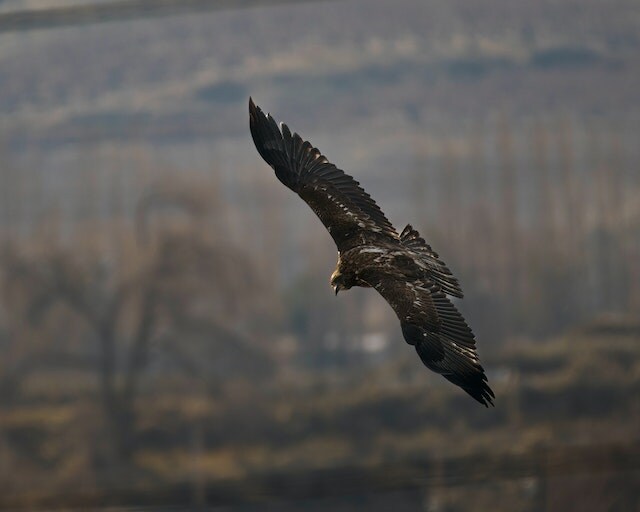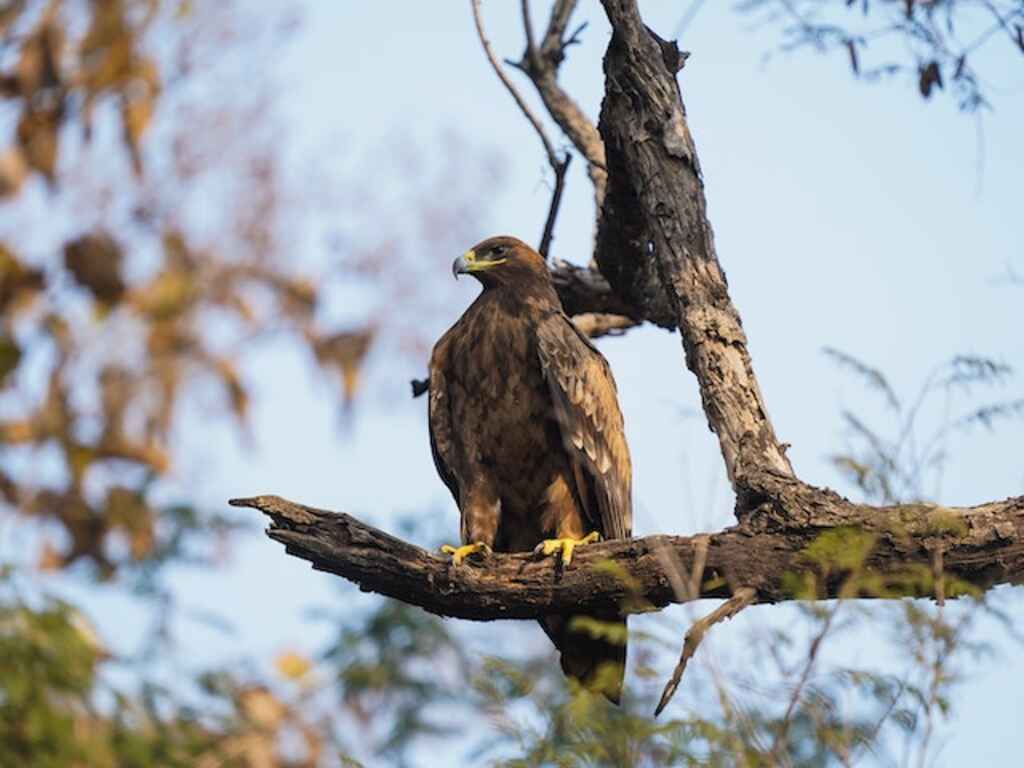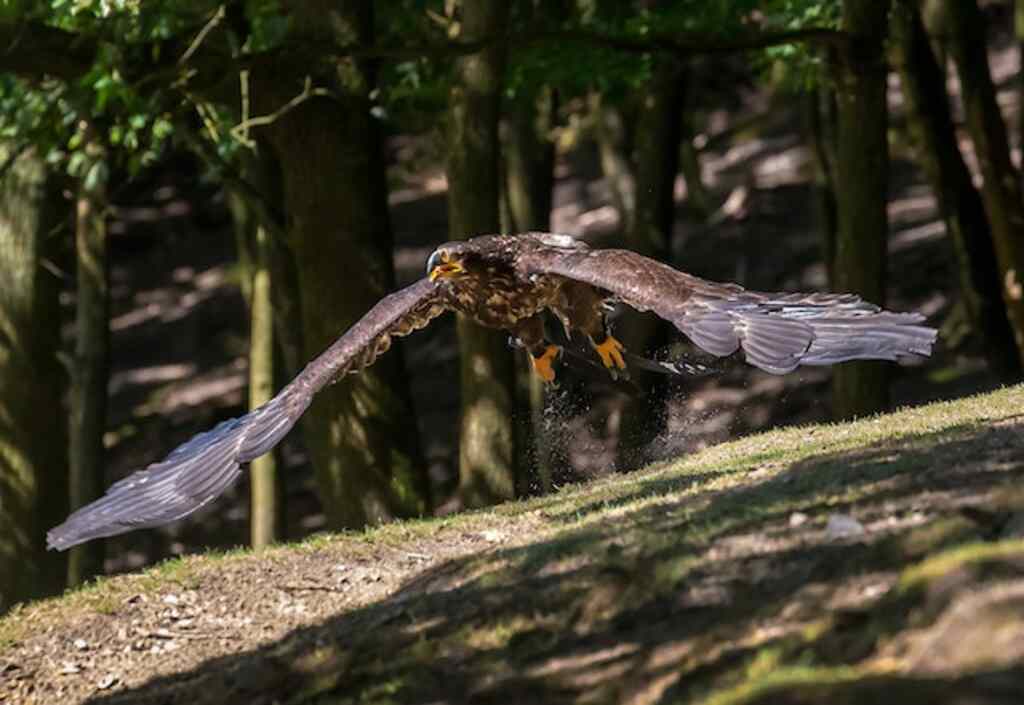Do Eagles Eat Hares? Join us on a captivating journey into the realm of predator-prey dynamics between majestic eagles and nimble hares.
Uncover the truth behind their diets, hunting techniques, and the impact of hare consumption on eagle populations.
Get ready to soar through a world of fascinating facts and unravel the secrets of this intricate relationship in the natural world.
Table of Contents
- 1 Key Takeaways
- 2 Do Eagles Eat Hares
- 3 Understanding Eagle Diets
- 4 Examining the Natural Habitat of Eagles
- 5 Exploring Eagle Hunting Techniques
- 6 Unveiling the Dietary Preferences of Eagles
- 7 Analyzing the Feeding Habits of Eagles
- 8 Investigating the Relationship Between Eagles and Hares
- 9 Considering Factors that Influence Eagle Diets
- 10 Debunking Myths About Eagle Diets
- 11 Studying the Impact of Hare Consumption on Eagle Populations
- 12 Exploring Other Prey Options for Eagles
- 13 Conclusion: The Complex Relationship Between Eagles and Hares
- 14 Frequently Asked Questions
- 14.1 Are hares the main source of food for eagles?
- 14.2 How do eagles locate and catch hares?
- 14.3 Do eagles only eat hares or do they consume other prey as well?
- 14.4 Are there any negative effects on eagle populations due to their consumption of hares?
- 14.5 What are some alternative prey options for eagles if hares are not available?
- 15 Author
Key Takeaways
- Eagles have a predator-prey relationship with hares and consume them as an important food source.
- Hare consumption meets the nutritional requirements of eagles and contributes to their physical condition and reproductive success.
- Eagles are opportunistic predators and have a diverse diet, including mammals like hares.
- Fluctuations in hare populations can affect eagle feeding habits and reproductive success, highlighting the ecological link between the two species.

Do Eagles Eat Hares
Yes, eagles do eat hares. Hares are part of the diet of some eagle species, especially those that inhabit areas where hares are prevalent.
Eagles are skilled predators and can capture and consume a variety of prey, including hares, as part of their natural feeding behavior.
Understanding Eagle Diets
Eagles have been observed to consume a variety of prey, including hares, as part of their diverse diet.
Understanding eagle diets involves examining eagle foraging behavior and understanding their nutritional needs.
Research has shown that eagles are opportunistic predators, capable of adapting their diet to the availability of prey in their environment.
They exhibit a preference for small to medium-sized mammals, such as hares, which provide them with essential nutrients and energy.
Through their hunting techniques, eagles are able to locate, capture, and consume hares efficiently.
Moreover, the consumption of hares meets the nutritional requirements of eagles, allowing them to maintain their physical condition and reproductive success.
By studying the eagle’s diet and foraging behavior, we gain insight into the complex ecological interactions between predators and their prey.
Examining the natural habitat of eagles provides further understanding of their ecological role and the factors that influence their foraging patterns.
Examining the Natural Habitat of Eagles
Nestled within the sprawling landscapes of forests and mountains, a majestic predator silently awaits its next meal.
Eagles, with their sharp vision and powerful wings, have adapted to thrive in diverse habitats across the globe. Understanding their natural habitat is crucial to comprehending their behavior and diet.
To gain insight into the lives of eagles, it is essential to study their migration patterns.
These patterns vary depending on the species and geographical location, with some eagles traveling thousands of miles in search of suitable breeding grounds and food sources.
Additionally, eagle nesting behaviors provide valuable information about their habitat preferences and reproductive strategies.
Eagles construct large nests, often in tall trees or on rocky cliffs, to protect their eggs and raise their young.
Examining the eagle’s natural habitat, migration patterns, and nesting behaviors provides a comprehensive understanding of their lifestyle and ecological role.
This knowledge sets the foundation for exploring their hunting techniques and further unraveling the mysteries of these remarkable birds.

Exploring Eagle Hunting Techniques
One fascinating aspect of the majestic predator’s behavior is its unique hunting techniques, which involve precise calculations and swift movements.
Eagles are known for their exceptional eyesight, allowing them to spot potential prey from great distances.
Once a suitable target, such as a hare, is identified, the eagle will swoop down from the sky, using its powerful wings to maintain control and accuracy.
It will then extend its sharp talons, gripping the hare firmly, and swiftly killing it with a precise bite to the neck.
After securing the prey, the eagle will typically carry it to a nearby perch or nest to consume.
The impact of hare consumption on eagle populations is significant, as it provides vital nutrients and energy for their survival.
Understanding these hunting techniques is essential in unveiling the dietary preferences of eagles and their role in maintaining ecosystem balance.
Unveiling the Dietary Preferences of Eagles
The study aims to shed light on the dietary preferences of these majestic predators by examining their hunting techniques and analyzing the prey they consume.
Eagles are known for their diverse feeding behavior, and their diet often depends on the availability of prey in their habitats.
One of the primary prey species for eagles is the hare, which plays a crucial role in their feeding habits.
Understanding the hare population dynamics and its relationship with the eagle population is essential for comprehending the feeding patterns of eagles.
By analyzing the feeding habits of eagles, researchers can gain valuable insights into their ecological roles and the impact they have on their prey populations.
This analysis will provide a comprehensive understanding of the eagles’ dietary preferences and their significance in the ecosystem.
Analyzing the Feeding Habits of Eagles
An investigation into the dietary preferences of eagles involves a comprehensive analysis of their feeding habits, which provides valuable insights into their ecological roles and the impact they have on prey populations.
Understanding eagle foraging patterns is essential for assessing their nutritional needs and ensuring their conservation.
Eagles exhibit a diverse range of feeding habits, with some species primarily consuming fish, while others target small mammals, birds, or even carrion.
They employ various hunting techniques, such as soaring and scanning the environment for potential prey, or engaging in aerial pursuits and stooping to catch fast-moving targets.
Additionally, eagles have adaptations like sharp talons and beaks, which allow them to efficiently capture and consume their prey.
Investigating the relationship between eagles and hares, for example, can shed light on the dynamics between predators and their prey, thus contributing to the broader understanding of ecosystems and species interactions.
Investigating the Relationship Between Eagles and Hares
Investigating the relationship between eagles and hares reveals a delicate dance between predator and prey, a battle of wits and agility in which the hares’ survival depends on their ability to outmaneuver the eagles’ deadly talons.
Understanding this intricate relationship requires an examination of various factors, including eagle migration patterns and hare population dynamics.
Eagles are known for their impressive migration patterns, covering vast distances in search of suitable feeding grounds.
These migratory movements play a crucial role in determining the availability of hares as a food source for eagles.
Hares, on the other hand, experience population fluctuations due to various ecological factors such as predation, disease, and resource availability.
These dynamics directly impact the eagles’ access to hares and influence their feeding habits.
Considering factors that influence eagle diets, such as migration patterns and hare population dynamics, provides valuable insights into the intricate relationship between these majestic birds of prey and their prey.

Considering Factors that Influence Eagle Diets
Migration patterns and population dynamics of hares are influential factors to consider when examining the dietary preferences of eagles.
Eagle diet diversity is influenced by a variety of factors, and understanding these factors is crucial for understanding their prey selection.
Eagles are opportunistic predators and their diets can vary depending on several factors such as prey availability, habitat suitability, and competition with other predators.
For example, during the breeding season, eagles may focus on consuming small mammals like hares due to their abundance and vulnerability.
Additionally, the seasonal migration patterns of hares can play a role in eagle diets, as eagles may follow these migrations to exploit the increased availability of hares in certain areas.
By considering these factors, we can better understand the complex relationship between eagles and their prey.
This understanding will help in debunking myths about eagle diets, which will be discussed in the subsequent section.
Debunking Myths About Eagle Diets
Considering the factors that influence eagle diets is crucial for understanding eagle foraging patterns and debunking misconceptions about their diet.
Many people believe that eagles primarily feed on fish, but research has shown that they are opportunistic predators and will consume a wide variety of prey, including mammals like hares.
While fish may be a significant part of their diet, eagles have been observed to consume hares in areas where they are abundant.
This demonstrates their adaptability and ability to exploit different food sources.
By debunking these misconceptions, we can develop a more accurate understanding of eagle foraging behavior and the ecological role they play in their habitats.
Moving forward, studying the impact of hare consumption on eagle populations will provide further insights into the dynamics of these magnificent birds’ diets.
Studying the Impact of Hare Consumption on Eagle Populations
Studying the potential impact of hare consumption on eagle populations offers valuable insights into the ecological dynamics of these majestic birds’ diets.
Hare population dynamics play a crucial role in determining the availability of this prey source for eagles.
By examining the relationship between hare populations and eagle foraging behaviors, researchers can better understand the ecological implications of hare consumption on eagle populations.
Eagles are opportunistic predators and their diets can vary depending on food availability.
Hence, fluctuations in hare populations can have a significant impact on the feeding habits and reproductive success of eagles.
Understanding the link between hare abundance and eagle populations can provide important information for conservation efforts and habitat management.
It can also shed light on the interdependence of different species within an ecosystem.
Exploring other prey options for eagles is crucial for their survival and overall ecosystem stability.
By studying the impact of hare consumption, researchers can gain insights into the potential consequences of changes in prey availability on eagle populations.
This knowledge can help guide future research and conservation strategies aimed at ensuring the long-term viability of these magnificent birds.

Exploring Other Prey Options for Eagles
With a diverse range of potential prey options available, eagles are presented with a multitude of opportunities to sustain their dietary requirements and contribute to the stability of their surrounding ecosystem.
- Fish: Eagles have been observed diving into lakes and rivers to catch fish, which provide them with a rich source of proteins and essential fatty acids.
- Small mammals: Squirrels, rodents, and small mammals are also on the menu for eagles. These prey options offer a balance of protein and fats, ensuring a well-rounded diet.
- Waterfowl: Ducks, geese, and other waterfowl are another important food source for eagles. These birds provide essential nutrients, including vitamins and minerals.
- Reptiles: Snakes and turtles are not off-limits for eagles. Although they might not be as common as other prey options, they offer a unique nutritional profile that contributes to the eagles’ overall health.
Exploring alternative prey options allows eagles to adapt to the availability of resources and maintain a balanced diet. This flexibility is crucial for their survival and highlights the complexity of their relationship with hares in the ecosystem.
Conclusion: The Complex Relationship Between Eagles and Hares
In exploring other prey options for eagles, it becomes evident that their diet is not solely dependent on hares.
While hares are indeed a significant part of their diet, eagles have been observed to consume a variety of other prey species as well.
However, it is important to acknowledge the complex relationship between eagles and hares. The dynamics of predator-prey interactions are multifaceted and involve various ecological implications.
The consumption of hares by eagles not only affects the population dynamics of both species but also has broader ecological implications.
Understanding the complexity of these predator-prey dynamics is crucial for comprehending the intricate web of interactions within ecosystems.
Further research is needed to fully grasp the extent of the ecological implications of hare consumption by eagles and its potential impact on the overall ecosystem dynamics.
Frequently Asked Questions
Are hares the main source of food for eagles?
Hares are a significant part of the diet of some eagle species due to their abundance, but eagles also consume other prey. An understanding of hare population dynamics and eagle hunting techniques is necessary to fully comprehend their relationship.
How do eagles locate and catch hares?
Eagles employ various hunting techniques to locate and catch hares. They possess adaptations such as keen eyesight, powerful talons, and strong wings, allowing them to spot and pursue their prey efficiently.
Do eagles only eat hares or do they consume other prey as well?
Eagles do not exclusively consume hares; their diet includes a variety of prey. Eagle hunting techniques involve keen eyesight and aerial agility. The impact of hare consumption on eagle behavior remains a subject of scientific inquiry.
Are there any negative effects on eagle populations due to their consumption of hares?
The consumption of hares by eagles can have negative effects on hare populations and also impact eagle reproductive success. This is due to the potential decrease in hare abundance and availability as a food source.
What are some alternative prey options for eagles if hares are not available?
Eagles have a diverse diet, including small mammals like rodents and rabbits. They employ various hunting techniques, such as aerial attacks and swooping down from perches, to catch alternative prey.




